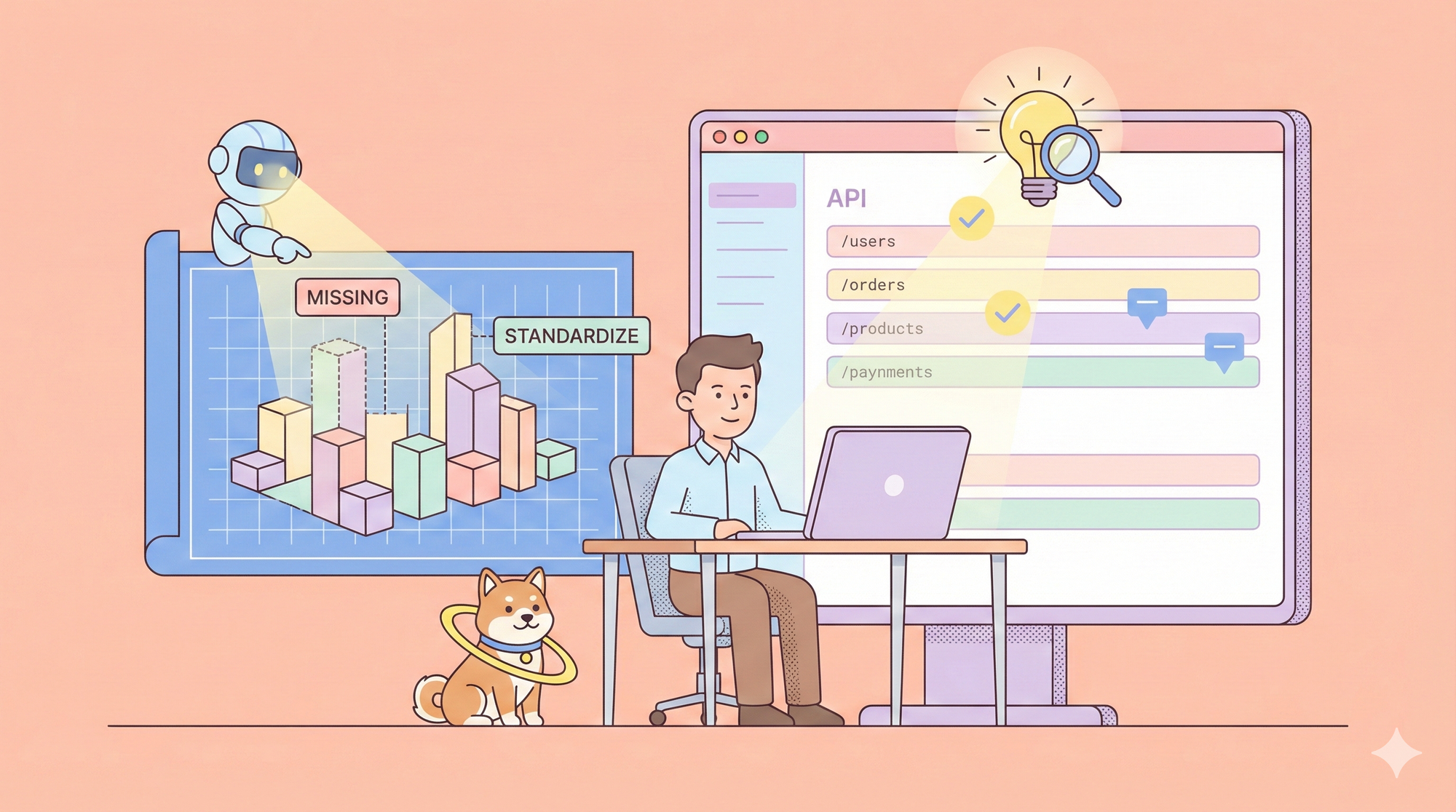Online API documentation is the backbone of modern software development. Whether you’re a developer, product manager, or technical writer, understanding how to write API documentation and create API documentation sites is essential for seamless integration, collaboration, and product success. This guide will introduce you to the fundamentals, best practices, and advanced strategies for building an API documentation website.
What is Online API Documentation?
The Foundation of Modern Development
Online API documentation is a structured, web-accessible resource that explains how to use and integrate with an API. It is the “user manual” for your API, providing all the information developers, partners, and even non-technical stakeholders need to understand, test, and implement your API in their projects. Unlike static PDFs or outdated wikis, online API documentation is interactive, always up-to-date, and accessible from anywhere.
Key components in online API documentation:
- Endpoint references: Detailed lists of available endpoints, including HTTP methods, paths, parameters, and expected responses.
- Authentication and security details: Instructions for obtaining and using API keys, OAuth tokens, or other authentication methods.
- Request/response examples: Realistic, copy-paste-ready code samples in multiple programming languages.
- Error codes and troubleshooting: Explanations of error messages, status codes, and how to resolve common issues.
- Guides, tutorials, and use cases: Step-by-step walkthroughs for common workflows, from authentication to advanced integrations.
Types of API Documentation:
| Type | Purpose |
|---|---|
| Reference Documentation | Lists endpoints, parameters, and expected responses |
| Tutorials & Guides | Step-by-step instructions for common use cases |
| Examples & Code Samples | Real-world request/response samples in multiple languages |
| Release Notes | Updates, new features, and bug fixes |
| Conceptual Documentation | Explains the logic, structure, and principles of the API |
Where does online API documentation live?
Most API documentation is hosted on a dedicated website or developer portal, often with a custom domain and branding. It can be public (for open APIs), partner-only (for B2B integrations), or internal (for private APIs).
Why is online API documentation essential?
Without clear, accessible documentation, even the best API will struggle to gain adoption. Developers expect to find everything they need—quickly and intuitively—without having to contact support or dig through code.
Why Online API Documentation Matters
Benefits for Teams, Partners, and End-Users
Online API documentation is not just a technical manual—it’s a strategic asset that can make or break your API’s success. Here’s why:
- Accelerates onboarding: New users and teams can get started quickly without hand-holding. A well-structured API documentation site acts as a self-service portal, reducing the learning curve for developers and partners.
- Reduces support load: Clear docs mean fewer support tickets and less time spent answering basic questions. This frees up your engineering and support teams to focus on higher-value tasks.
- Boosts adoption: Well-documented APIs are more likely to be integrated and recommended. Public APIs with great documentation see higher usage, more community contributions, and better word-of-mouth.
- Improves collaboration: Teams can work together efficiently, even across time zones. Internal APIs with strong documentation foster cross-team collaboration and reduce knowledge silos.
- Ensures compliance and security: Proper documentation helps enforce best practices and regulatory requirements. By clearly outlining authentication, rate limits, and data handling, you reduce the risk of misuse or security breaches.
Overview of API Documentation Key Benefits:
| Benefit | Impact |
|---|---|
| Faster Developer Onboarding | Reduces ramp-up time for new users |
| Lower Support Costs | Fewer tickets and less developer frustration |
| Higher API Adoption | More integrations, more users, more business value |
| Better Maintenance | Easier to update, debug, and extend APIs |
| Stronger Security & Compliance | Clear guidelines for authentication and data handling |
For Internal APIs:
Documentation is the “single source of truth” for your team. It helps onboard new hires, supports DevOps and QA, and ensures everyone is working from the same playbook.
For Public APIs:
Documentation is your product’s storefront. It’s often the first thing potential users see—and the deciding factor in whether they choose your API over a competitor’s.
Crucial Elements in Online API Documentation
What Every API Documentation Site Should Include
To create API documentation that is truly useful, include these essential elements:
Overview:
Start with a clear summary of what the API does, its main use cases, and who it’s for. This sets the context for new users and helps them quickly assess if your API fits their needs.
Authentication:
Provide step-by-step instructions for obtaining and using API keys, OAuth tokens, or other authentication methods. Include code samples and screenshots where possible. Explain token expiration, renewal, and best practices for secure storage.
Endpoint Reference:
List all available endpoints, grouped logically (e.g., by resource or function). For each endpoint, document:
- Path and HTTP method (GET, POST, etc.)
- Parameters (query, path, header, body)
- Request and response schemas (with data types and constraints)
- Example requests and responses
- Status and error codes
Request/Response Examples:
Provide realistic, copy-paste-ready code samples in multiple languages (e.g., cURL, Python, JavaScript). Show both successful and error scenarios.
Error Codes:
List all possible error codes, their meanings, and troubleshooting tips. Include example error responses and guidance on how to resolve common issues.
Rate Limits & Quotas:
Clearly state any usage constraints, such as maximum requests per minute or daily quotas. Explain what happens when limits are exceeded and how to handle rate limiting gracefully.
Versioning:
Document how to access different API versions, what’s changed between versions, and how to migrate. Use changelogs and deprecation notices to keep users informed.
Interactive Features:
Enable users to test endpoints directly from the documentation ("Try it" buttons), view live responses, and experiment with different parameters.
Feedback Mechanisms:
Allow users to report issues, suggest improvements, or ask questions directly from the docs. Use forms, comment sections, or links to support channels.
Legal & Support Info:
Include terms of use, privacy policy, and contact details for support or partnership inquiries.
Pro Tip:
Use tables, bullet lists, and bold/italic text to break up content and make it scannable. Add diagrams, screenshots, and flowcharts to illustrate complex concepts.
| Section | What to Include | Why It Matters |
|---|---|---|
| Overview | API purpose, main use cases, audience | Sets context, attracts users |
| Auth | API key/OAuth setup, code samples, security tips | Reduces friction, boosts trust |
| Endpoints | Paths, methods, params, schemas, examples | Enables quick integration |
| Errors | Codes, messages, troubleshooting | Reduces support burden |
| Rate Limits | Quotas, handling, error responses | Prevents abuse, sets expectations |
| Versioning | Changelogs, migration guides | Ensures smooth upgrades |
| Interactive | “Try it” buttons, live code editors | Boosts engagement, learning |
| Feedback | Forms, comments, support links | Drives continuous improvement |
Main Tools for Creating Online API Documentation
Choosing the Right API Documentation Creator Online
There are many API documentation builders and platforms. Here are some of the most popular, with their strengths and best use cases:
| Tool/Platform | Key Features | Best For |
|---|---|---|
| Apidog | All-in-one API design, test, and documentation platform; AI-powered; OpenAPI support; instant preview; collaboration | Teams seeking a unified, modern solution |
| Swagger UI | OpenAPI-based, interactive docs, codegen | OpenAPI-first teams |
| Postman | API testing, auto-generated docs, collaboration | Teams already using Postman |
| ReDoc | Beautiful, responsive OpenAPI docs | Static site generation |
| Theneo | AI-powered, Notion-like interface | Teams wanting AI-generated docs |
| Treblle | Auto-generated docs, analytics, AI assistant | API observability and docs |
Also read: AI-Powered Documentation Solutions for Modern Development
Why Apidog?
Apidog stands out as the premier online API documentation creator for several reasons:
- Unified Platform: Design, test, and document APIs in one place. No more switching between tools or losing context.
- AI-Powered: Generate field descriptions, mock data, and more with AI. Apidog’s AI features help you maintain consistency, fill in gaps, and speed up documentation.
- OpenAPI-First: Full support for OAS 3.0/3.1, import/export, and compliance. Easily migrate from other tools or integrate with your CI/CD pipeline.
- Collaboration: Real-time editing, feedback, and version control. Invite team members, assign roles, and track changes.
- Customization: Themes, custom domains, and layouts for your API documentation website. Make your docs match your brand.
- SEO-Friendly: Built-in SEO settings to boost discoverability. Optimize meta titles, descriptions, and keywords for search engines.
- Interactive Features: "Try it" buttons, live code editors, and instant previews. Let users experiment and learn by doing.
- Batch Management: Manage multiple endpoints, tags, and versions with ease.
- Security & Compliance: Define and manage security schemes (API Key, OAuth 2.0, JWT, etc.) at every level.
Step-by-Step Guide: How to Create API Documentation with Apidog
From Project Creation to Publishing Your API Documentation Site online
1. Create a New API Project
- Go to Apidog’s Home > My Teams > Projects.
- Click New Project.
- Choose your project type (HTTP for REST, SOAP, GraphQL, WebSocket; gRPC for gRPC APIs).
- Name your project and set permissions/language as needed.
- Optionally, include sample data from the PetStore example for a quick start.

Tip:
Apidog supports both design-first and request-first approaches. You can start from scratch or import existing API specs.
2. Import or Design Your API
- Import existing API specs (OpenAPI, Swagger, Postman, RAML, etc.)

- Use Apidog’s visual editor to design endpoints, schemas, and components from scratch.

Example:
Import a Swagger file to instantly generate a full API project, complete with endpoints, schemas, and security schemes.

3. Document Endpoints
For each endpoint, specify:
- Path and method (GET, POST, etc.)
- Parameters (query, path, header, body)
- Request and response schemas (with data types and constraints)
- Example requests and responses
- Authentication/security schemes
- Error responses (reuse components for consistency)
- Metadata (tags, status, maintainer, etc.)

Pro Tip:
Use Apidog’s schemas and components features to standardize parameters and responses across endpoints.
4. Leverage AI Features
- Enable AI features to auto-generate field descriptions, mock data, and more.
- Use AI to refine schemas and ensure consistency.
- AI can suggest parameter names, generate test scenarios, and check compliance.
Example:
With a single click, Apidog’s AI can fill in missing mock fields, saving hours of manual work.

5. Configure Global Parameters and Common Fields
- Set up global parameters (e.g., API keys) for use across all endpoints.
- Define common fields for reuse and consistency.
- Use environment variables for sensitive data and multi-environment support.

6. Set Up Security Schemes
- Create and assign security schemes (API Key, OAuth 2.0, JWT, etc.) at the project, folder, or endpoint level.
- Configure scopes, default values, and inheritance for flexible authentication.
- Use Apidog’s visual interface to manage security without editing raw YAML/JSON.

Example:
Set up OAuth 2.0 with multiple grant types, define scopes, and test authentication flows directly from the docs.
7. Add Multiple Request/Response Examples
- Configure multiple request body examples for different scenarios (e.g., normal vs. error cases).
- Provide diverse response examples for clarity.
- Use Apidog’s Mock feature to create realistic mock data.
8. Batch Manage Endpoints
- Use batch operations to update, tag, or move multiple endpoints at once.
- Bulk edit statuses, tags, responsible maintainers, and more.
9. Preview and Test
- Use Apidog’s "Run" feature to test endpoints directly from the docs.
- Debug with real or mock data.
- View actual requests and responses, including headers and status codes.
10. Publish Your API Documentation Online
- Go to the "Publish" section.
- Customize your documentation site’s layout, theme, and domain.
- Set SEO options for better search engine ranking.
- Publish with a single click and share the link.
- Use custom domains and layouts for a branded experience.
11. API Versioning and Update
- Manage multiple API versions.
- Publish, share, and update documentation for each version as your API evolves.
- Use changelogs and migration guides using the Apidog's built-in Markdown to keep users informed.
Check out this great example of the online API documentation created by Apidog.
Advanced Tips for Advanced Online API Documentation
1. SEO Settings
Use Apidog’s built-in SEO tools to optimize meta titles, descriptions, and keywords for your API documentation site. This boosts your ranking in search engines and drives more organic traffic.
2. Custom Domains & Layouts
Brand your documentation with custom domains and layouts. Match your company’s look and feel for a professional appearance.
3. LLM-Friendly Features
Make your docs machine-readable and ready for AI-powered tools. Use structured data, OpenAPI compliance, and clear schemas to enable integration with large language models and developer assistants.
4. Analytics & Feedback
Track usage and gather user feedback to continuously improve your docs. Use Google Analytics to identify popular endpoints, common errors, and areas for improvement.
10 Best Practices for Creating Online API Documentation
How to Write API Documentation That Developers Love
1. Know Your Audience: Identify whether your readers are backend developers, frontend engineers, product managers, or business partners. Tailor your language, examples, and level of detail accordingly. For example, developers want code samples and error handling, while product managers may care more about use cases and limits.
2. Be Clear and Concise: Use simple, direct language. Avoid jargon unless it’s explained. Each section should answer a specific question (“How do I authenticate?”, “What does this endpoint do?”) without unnecessary fluff.
3. Organize Logically: Group related endpoints, use clear H2/H3 headings, and provide a robust search function. Use a sticky sidebar or table of contents for easy navigation.
4. Provide Real Examples: Show actual requests and responses, not just abstract descriptions. Include both successful and error scenarios. Use multiple programming languages where possible.
5. Keep It Up-to-Date: Update docs with every API change. Use changelogs and versioning to keep users informed. Outdated docs erode trust and lead to support headaches.
6. Enable Feedback: Let users report issues or suggest improvements directly from the docs. Use forms, comment sections, or links to GitHub issues.
7. Automate Where Possible: Use tools to generate and update documentation from your API definitions (OpenAPI, Swagger, etc.). This ensures accuracy and reduces manual effort.
8. Include Interactive Elements: Allow users to test endpoints directly in the documentation. Use "Try it" buttons, sandboxes, and live code editors.
9. Maintain Consistency: Use the same terminology, formatting, and structure throughout. Create templates for endpoints, errors, and examples.
10. Promote Accessibility: Ensure your documentation is usable by people with disabilities. Use semantic HTML, alt text for images, and high-contrast themes.
Bonus Tips:
- Assign ownership: Make someone responsible for maintaining the docs.
- Cover all types: Reference, guides, examples, and release notes.
- Provide quickstart guides: Help new users get up and running fast.
- Use feedback to improve: Regularly review user suggestions and analytics.
Example Checklist:
- Overview and authentication details
- Endpoint descriptions with sample requests/responses
- Error handling and troubleshooting
- Rate limits and usage policies
- Change logs and version history
Conclusion: Elevate Your API Documentation with Apidog
In the rapidly changing world of software development, the ability to create API documentation online is a vital skill. By following the strategies outlined in this guide and leveraging the power of Apidog as your API documentation creator online, you can deliver clear, comprehensive, and engaging documentation that empowers your users and accelerates your product’s success.
Key Takeaways:
- Online API documentation is essential for modern development and collaboration.
- Writing effective API documentation requires clarity, structure, and attention to user needs.
- Apidog is the leading online API documentation creator, offering unmatched features and ease of use.
- Follow the step-by-step guide to quickly launch your API documentation site and drive adoption.
Delve into the future of API documentation—choose Apidog and transform the way you write, create, and share your APIs.



